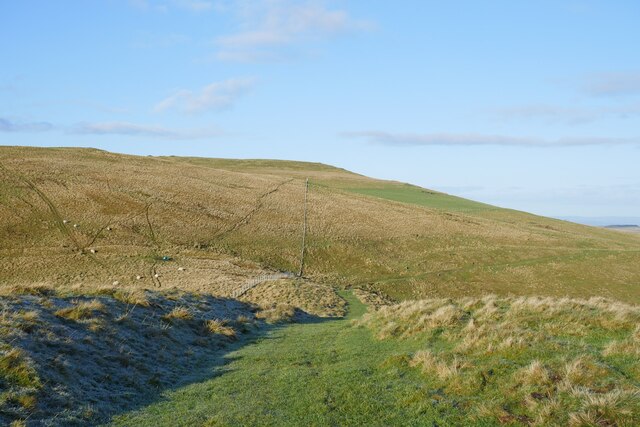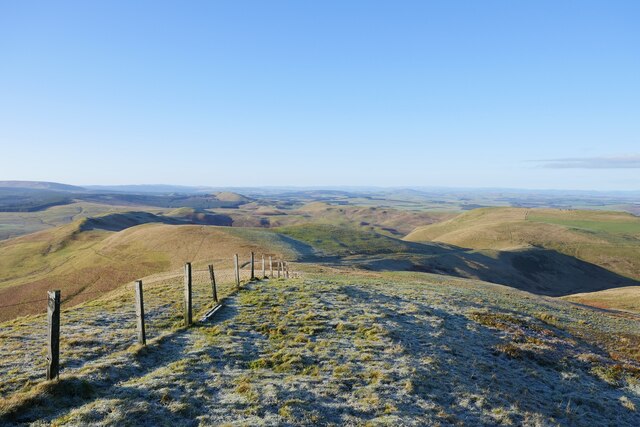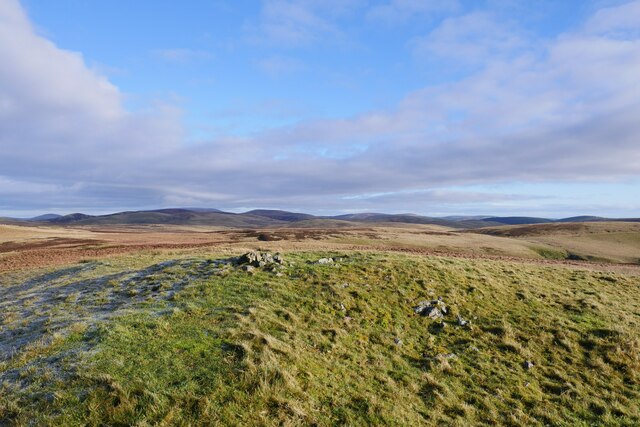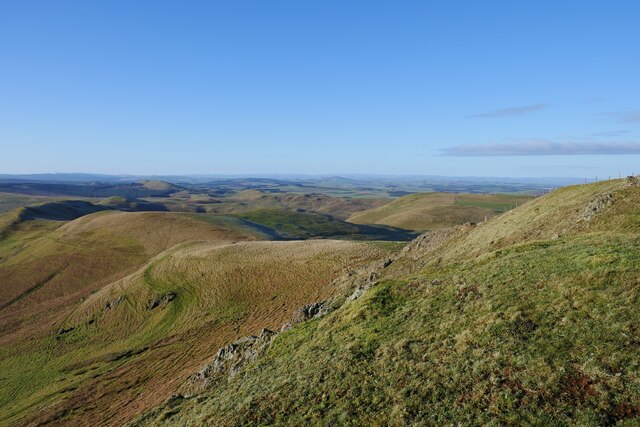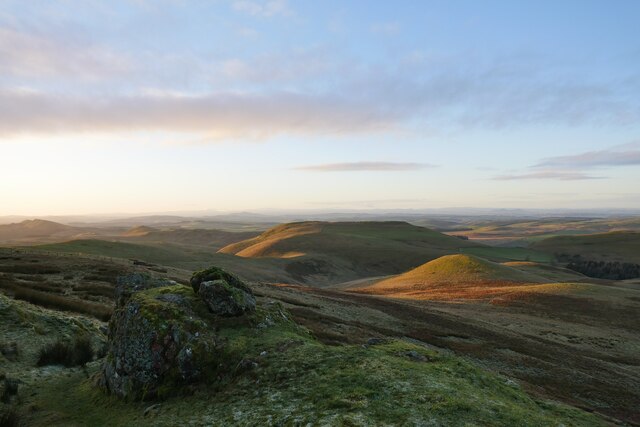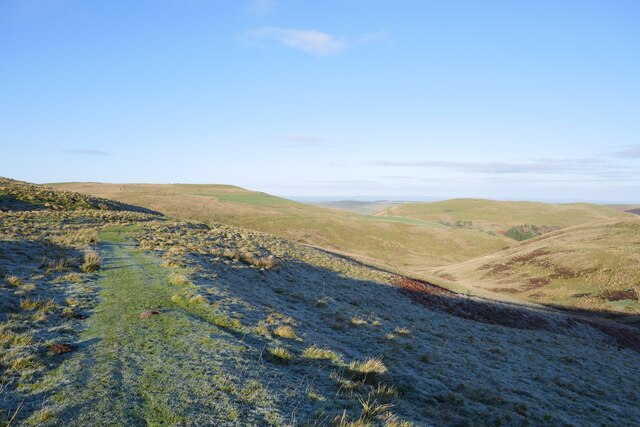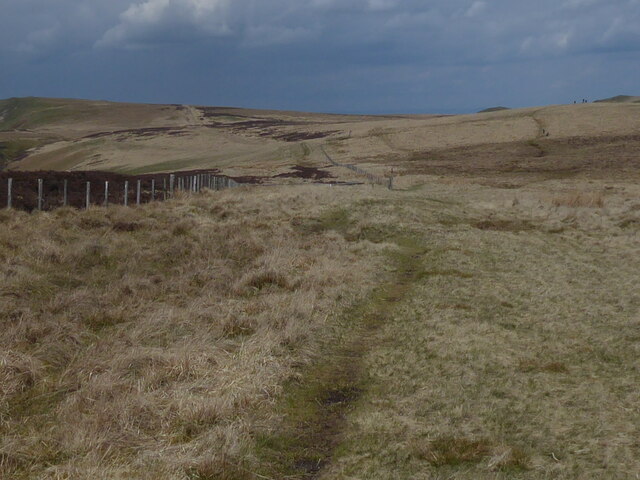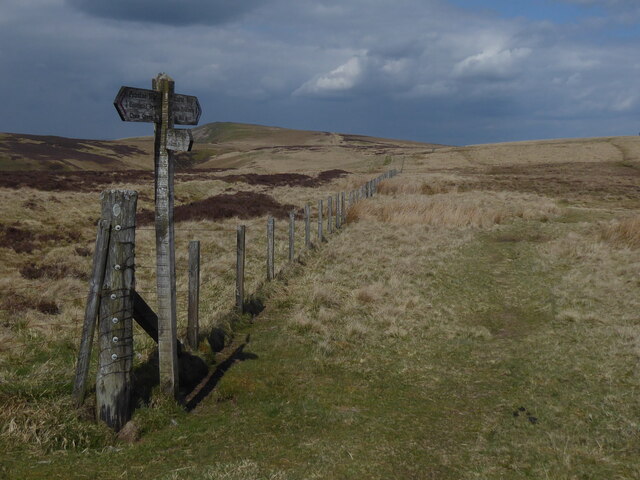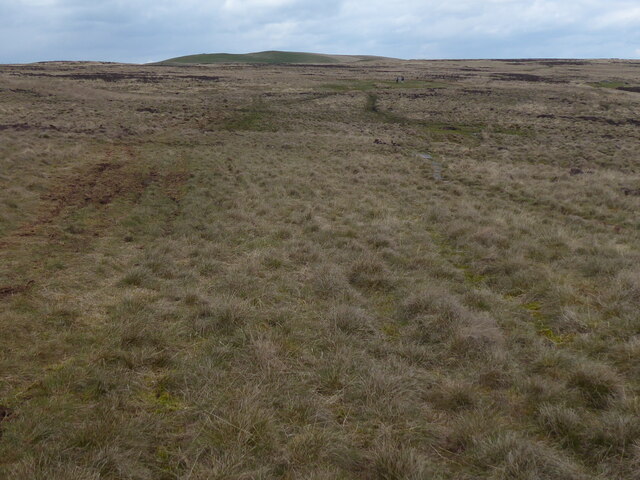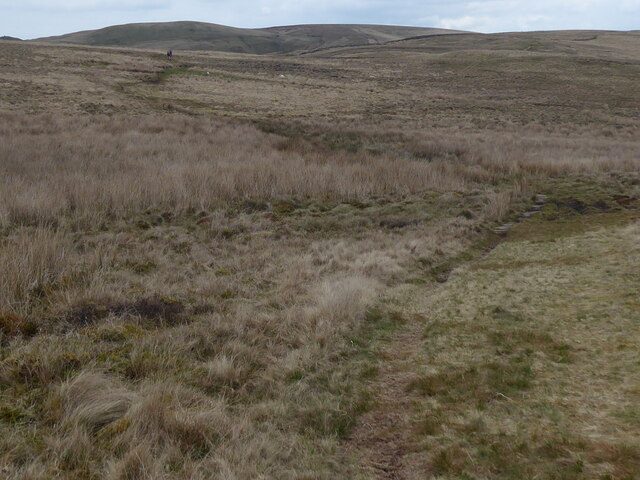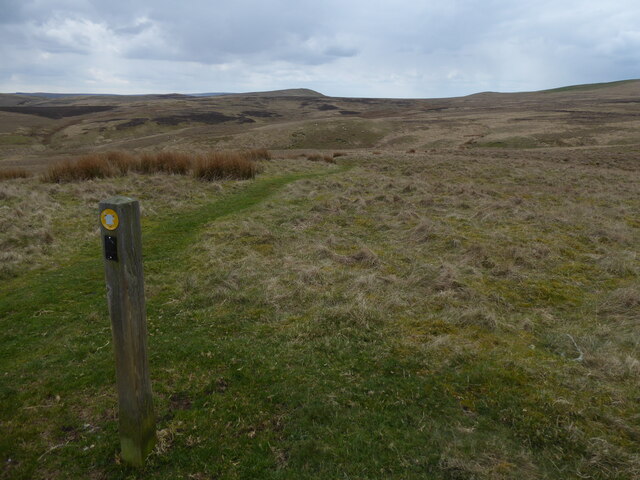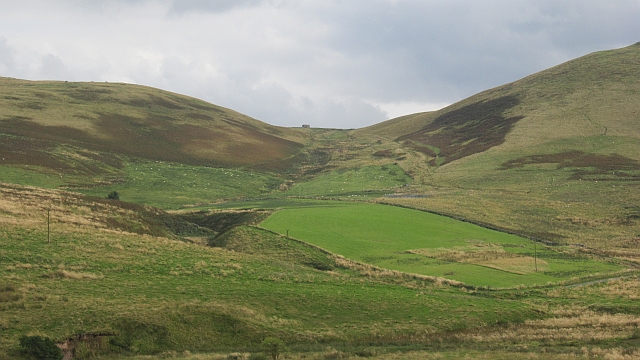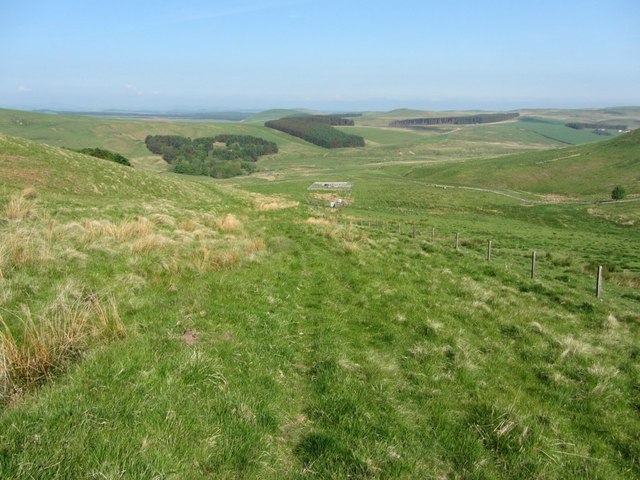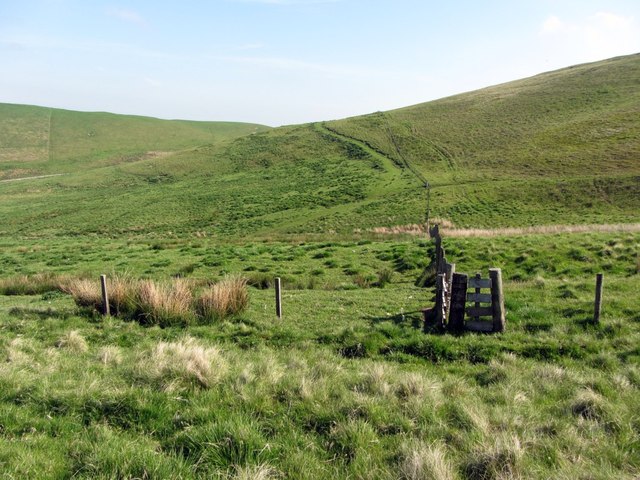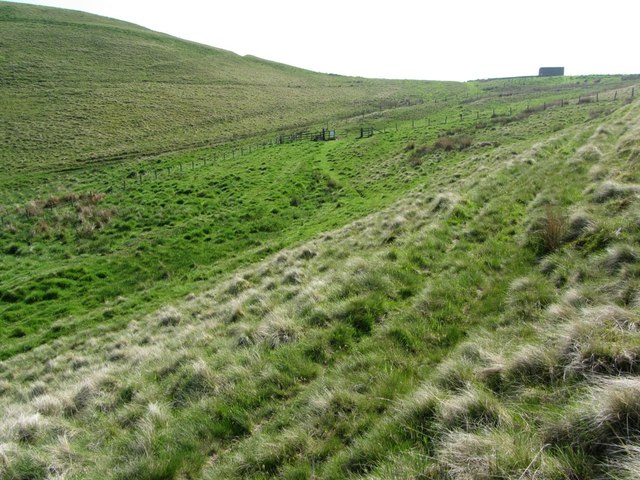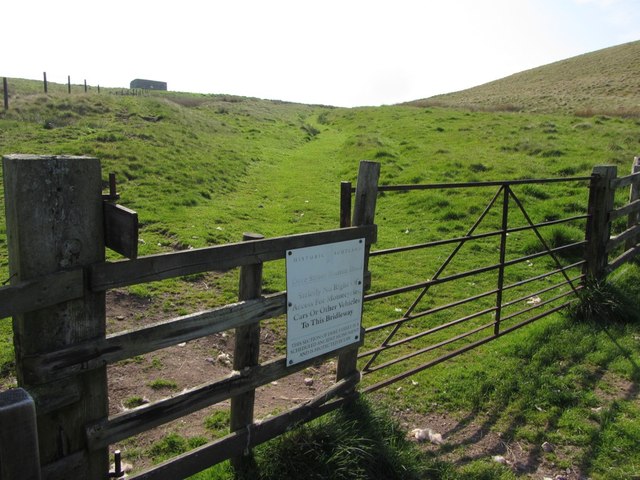Scraesburgh Fell
Downs, Moorland in Roxburghshire
Scotland
Scraesburgh Fell
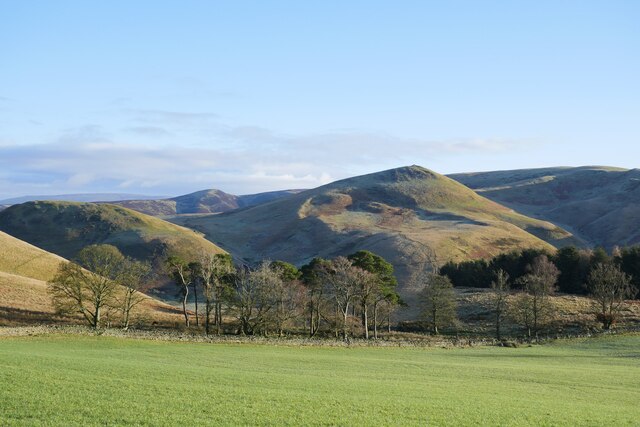
Scraesburgh Fell is a prominent geographical feature located in Roxburghshire, a historic county in the southern part of Scotland. It is characterized by its sprawling downs and moorland, which contribute to its rugged and picturesque landscape.
The fell is situated near the town of Hawick and covers a substantial area of approximately 10 square miles. Its terrain predominantly consists of undulating hills, with some areas reaching heights of around 1,500 feet above sea level. The slopes are covered in heather and grasses, providing a rich habitat for various species of flora and fauna.
The region's climate is typically temperate, with mild summers and cool winters. The fell experiences significant rainfall throughout the year, contributing to the lush vegetation that carpets the area. The changing seasons often bring a vibrant display of colors, with the heather blooming in hues of purple during the late summer months.
Scraesburgh Fell is a popular destination for outdoor enthusiasts, offering numerous opportunities for activities such as hiking, walking, and wildlife spotting. The paths and trails that crisscross the area provide breathtaking views of the surrounding countryside, including the nearby Cheviot Hills.
The fell is also of historical significance, with evidence of ancient settlements and stone circles scattered across its expanse. These remnants serve as a reminder of the area's rich cultural heritage and provide a glimpse into the lives of those who once inhabited the region.
In conclusion, Scraesburgh Fell in Roxburghshire is a captivating natural landscape that offers visitors a chance to immerse themselves in the beauty of the Scottish countryside. With its downs, moorland, and historical sites, it is an idyllic destination for those seeking nature, tranquility, and a connection to the past.
If you have any feedback on the listing, please let us know in the comments section below.
Scraesburgh Fell Images
Images are sourced within 2km of 55.401658/-2.3425918 or Grid Reference NT7812. Thanks to Geograph Open Source API. All images are credited.
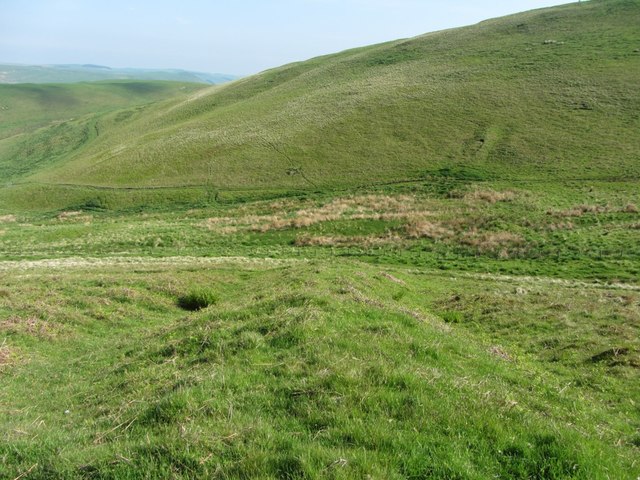
Scraesburgh Fell is located at Grid Ref: NT7812 (Lat: 55.401658, Lng: -2.3425918)
Unitary Authority: The Scottish Borders
Police Authority: The Lothians and Scottish Borders
What 3 Words
///resold.tidal.paint. Near Rochester, Northumberland
Nearby Locations
Related Wikis
Pennymuir Roman camps
The Pennymuir Roman camps are situated southeast of Jedburgh in the Scottish Borders area of Scotland, near the Anglo-Scottish border, in the former Roxburghshire...
Chew Green
Chew Green is the site of the ancient Roman encampment, commonly but erroneously called Ad Fines (Latin: The Limits) on the 1885-1900 edition of the Ordnance...
Featherwood Roman Camps
Featherwood Roman Camps are neighbouring archaeological sites in Northumberland, England, 1 mile (1.6 km) north of Featherwood and about 3 miles (5 km...
Hownam
Hownam or Hounam is a small village and parish situated 8 miles east of Jedburgh in the Scottish Borders area of Scotland, near the Anglo-Scottish border...
Nearby Amenities
Located within 500m of 55.401658,-2.3425918Have you been to Scraesburgh Fell?
Leave your review of Scraesburgh Fell below (or comments, questions and feedback).
